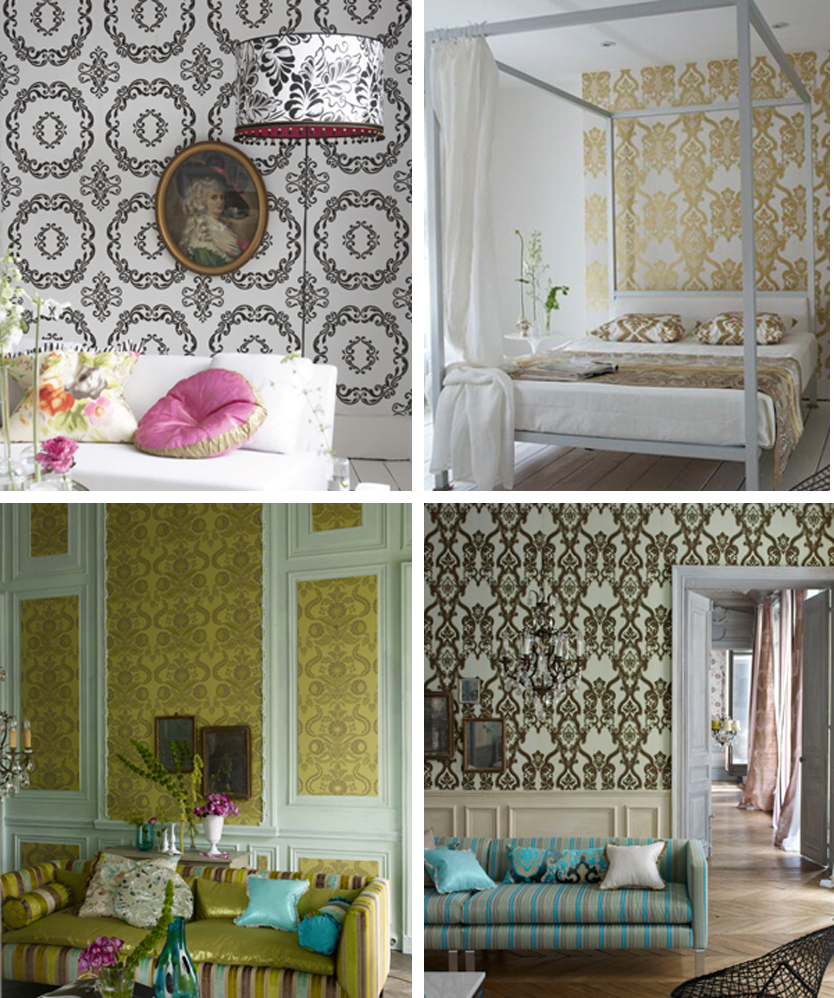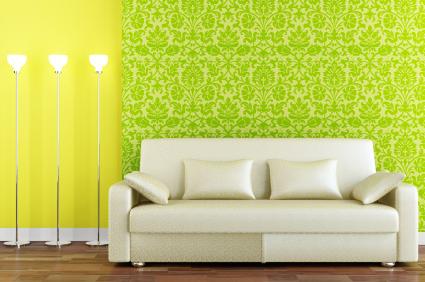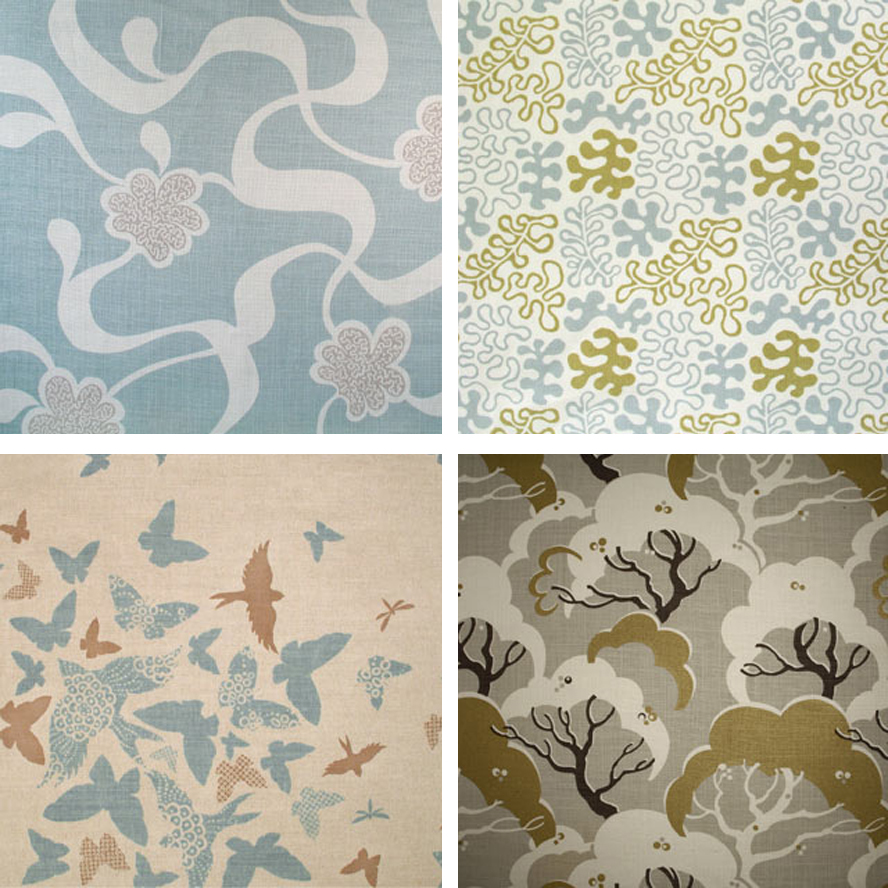Fabric As Wallpaper Biography
The patterns used in damask are often geometric or botanical in theme, although the pattern may also integrate animals or simple scenes. The weaving style originated in Asia, spread across the Middle East, and reached into Europe thanks to the efforts of traders like Marco Polo. By the 12th century, the fabric had been named after Damascus, which was quickly rising to fame as a centre of textile production. The ornate fabrics exported from Damascus were well known, leading many people to associate the fabric with the city. Italy also housed numerous well known manufacturers of damask.
Most of the designs used in damasks today are copies of those woven centuries ago in Italy, Spain and France. Though damask weaving was not an English art, the English decorators of the 18th century used large quantities of Italian damasks, both for furniture coverings and upholstered onto the walls. Damask wallpapers mimic the look (and sometimes the texture) of damask fabrics in which the pattern is intensified by the weave running opposite that of the background.
While the best designs of damasks are derived from precious bits preserved in museums, there are also patterns inspired by the life of today. Some designs suggestive of Japan are in brilliant reds, like those employed in lacquer; the straight trunks of the bamboo are shown against misty mountains and violet clouds. Especially modernistic is a pattern of new flower forms that may have been inspired by roses, but it is removed from reality by diagonal rays of darker tones that slant across the pattern. Delicate peach, jade or other hues, never used by the old Italian and French damask weavers, make these modern weaves distinctive.
At Fabrics&Papers the most popular damask wallpaper is Villiers which comes in an array of effects, and is also available as a curtain fabric. This wallpaper is adaptable as it works in both a commercial and home environment. It would equally look good in a contemporary dining room or in a chic bedroom. As for damask fabrics, our customers favourite is Damasco Antico. This is a much more traditional style, but equally versatile. One huge bonus is that this fabric is one of our chosen designs that can be upholstered on to our beautiful range of furniture.








The patterns used in damask are often geometric or botanical in theme, although the pattern may also integrate animals or simple scenes. The weaving style originated in Asia, spread across the Middle East, and reached into Europe thanks to the efforts of traders like Marco Polo. By the 12th century, the fabric had been named after Damascus, which was quickly rising to fame as a centre of textile production. The ornate fabrics exported from Damascus were well known, leading many people to associate the fabric with the city. Italy also housed numerous well known manufacturers of damask.
Most of the designs used in damasks today are copies of those woven centuries ago in Italy, Spain and France. Though damask weaving was not an English art, the English decorators of the 18th century used large quantities of Italian damasks, both for furniture coverings and upholstered onto the walls. Damask wallpapers mimic the look (and sometimes the texture) of damask fabrics in which the pattern is intensified by the weave running opposite that of the background.
While the best designs of damasks are derived from precious bits preserved in museums, there are also patterns inspired by the life of today. Some designs suggestive of Japan are in brilliant reds, like those employed in lacquer; the straight trunks of the bamboo are shown against misty mountains and violet clouds. Especially modernistic is a pattern of new flower forms that may have been inspired by roses, but it is removed from reality by diagonal rays of darker tones that slant across the pattern. Delicate peach, jade or other hues, never used by the old Italian and French damask weavers, make these modern weaves distinctive.
At Fabrics&Papers the most popular damask wallpaper is Villiers which comes in an array of effects, and is also available as a curtain fabric. This wallpaper is adaptable as it works in both a commercial and home environment. It would equally look good in a contemporary dining room or in a chic bedroom. As for damask fabrics, our customers favourite is Damasco Antico. This is a much more traditional style, but equally versatile. One huge bonus is that this fabric is one of our chosen designs that can be upholstered on to our beautiful range of furniture.
Fabric As Wallpaper

Fabric As Wallpaper
Fabric As Wallpaper

Fabric As Wallpaper

Fabric As Wallpaper

Fabric As Wallpaper
Fabric As Wallpaper

Fabric As Wallpaper

Fabric As Wallpaper
Creative Ways To Use Fabric And Wallpaper In Your Home
Fabric Backed Vinyl ...The Easily Removable Wallpaper
No comments:
Post a Comment